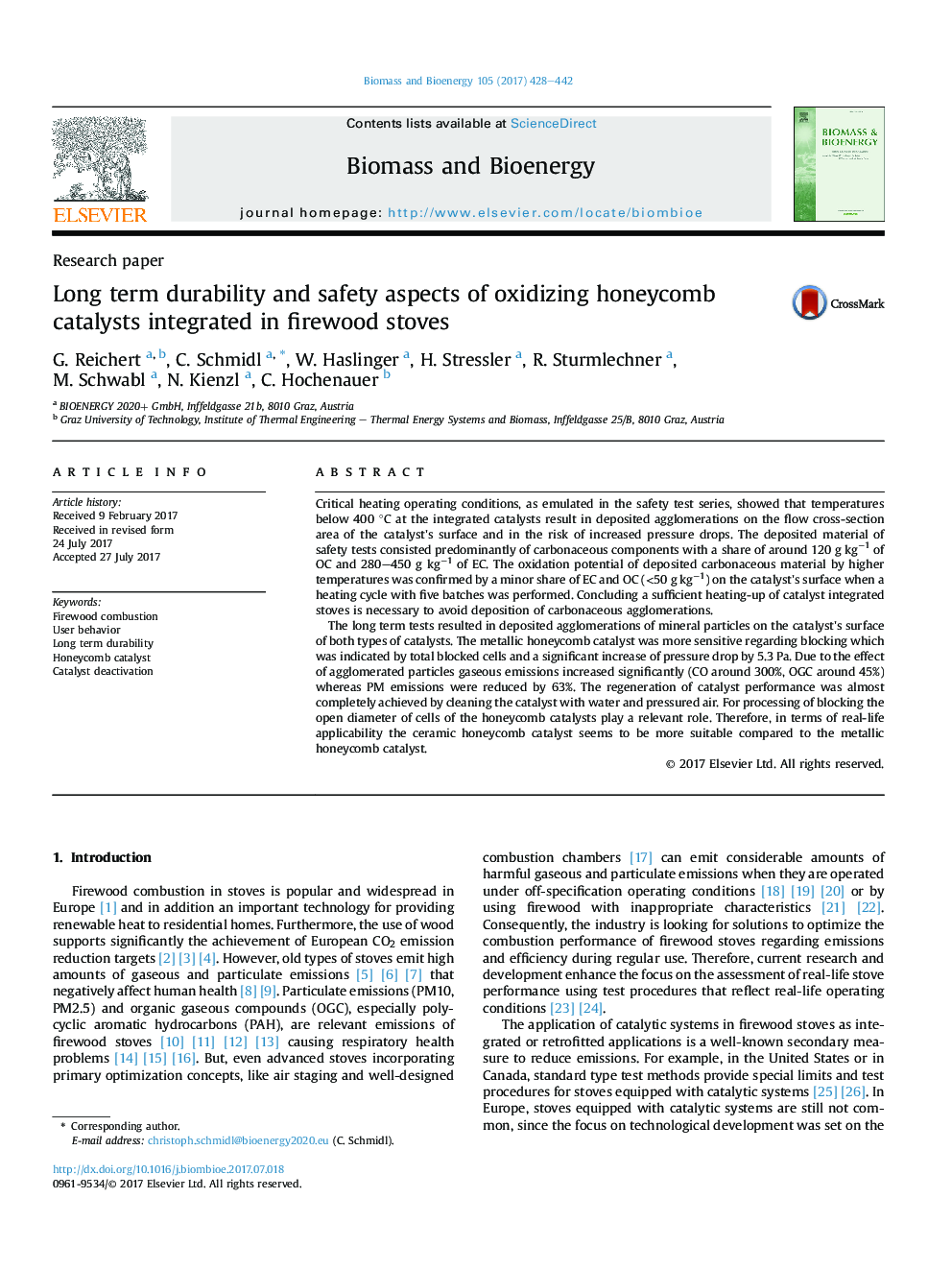| Article ID | Journal | Published Year | Pages | File Type |
|---|---|---|---|---|
| 4996181 | Biomass and Bioenergy | 2017 | 15 Pages |
Abstract
The long term tests resulted in deposited agglomerations of mineral particles on the catalyst's surface of both types of catalysts. The metallic honeycomb catalyst was more sensitive regarding blocking which was indicated by total blocked cells and a significant increase of pressure drop by 5.3Â Pa. Due to the effect of agglomerated particles gaseous emissions increased significantly (CO around 300%, OGC around 45%) whereas PM emissions were reduced by 63%. The regeneration of catalyst performance was almost completely achieved by cleaning the catalyst with water and pressured air. For processing of blocking the open diameter of cells of the honeycomb catalysts play a relevant role. Therefore, in terms of real-life applicability the ceramic honeycomb catalyst seems to be more suitable compared to the metallic honeycomb catalyst.
Related Topics
Physical Sciences and Engineering
Chemical Engineering
Process Chemistry and Technology
Authors
G. Reichert, C. Schmidl, W. Haslinger, H. Stressler, R. Sturmlechner, M. Schwabl, N. Kienzl, C. Hochenauer,
